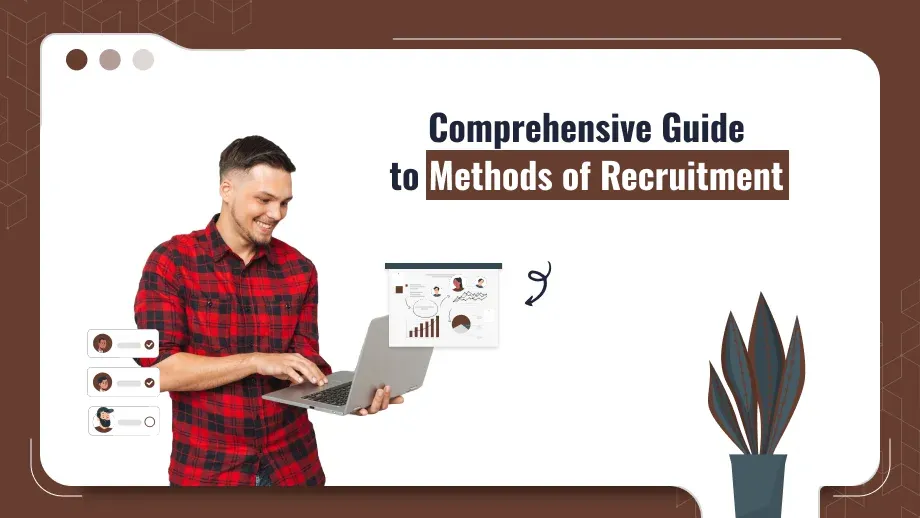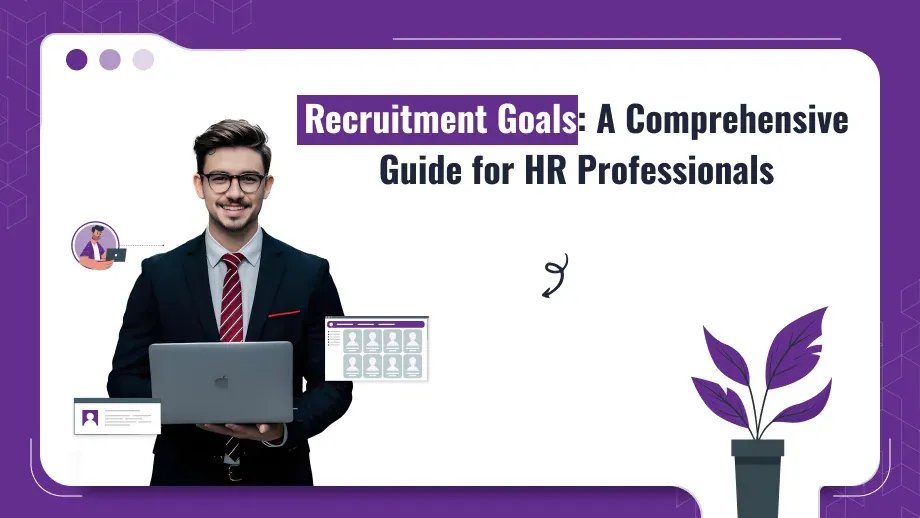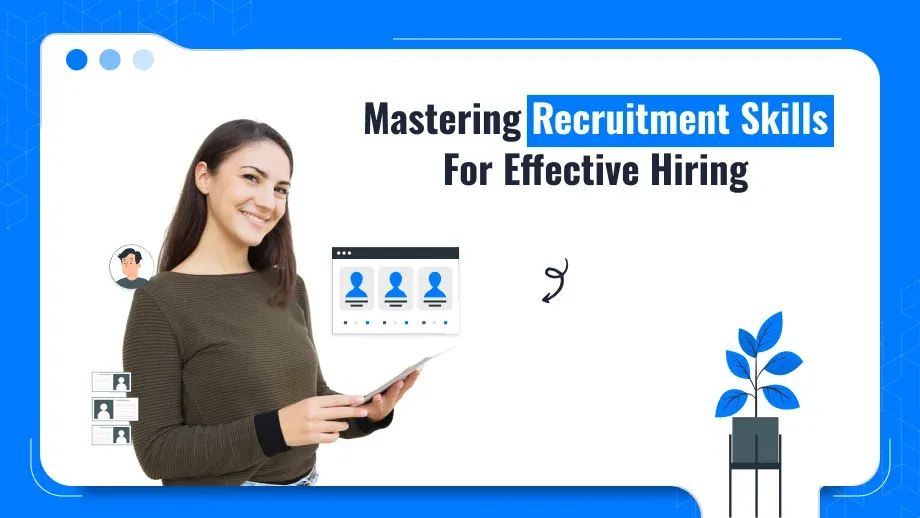
methods of recruitment are at the core of how an organization grows. It determines who joins the team and eventually influences the long-term success and culture of the business. For a company to grow well in such a competitive talent market, adopting the right recruitment methods specifically suited to its needs is crucial. Whether filling one position or scaling up through expansion, choosing the right recruitment strategy impacts productivity, innovation, and satisfaction of employees.
Most organizations use a combination of traditional and modern methods of recruitment because each needs to attract different employees to assist in the changing demands of the job market.
What Are Recruitment Methods?
Methods of recruitment are systematic approaches organizations use to find and hire the right talent. It encompasses diverse tools, techniques, and strategies to match candidates efficiently and effectively.
Some key elements of recruitment in HRM include:
- Identifying job requirements and defining the ideal candidate profile.
- Sourcing talent through internal or external channels.
- Evaluate candidates using structured interviews and assessments.
Understanding what are the methods of recruitment helps organizations choose between internal and external approaches balancing cost-efficiency and access to a diverse talent pool. A company’s choice of types of recruitment method often determines the breadth and quality of its workforce.
Key Internal Recruitment Methods
Methods of recruitment applies to giving a fresh opportunity or redeployment of current employees in the organization. It is highly effective for fostering loyalty, retaining institutional knowledge, and saving costs.
Promotions
Promotions in their line of duty award the employee for their effort hard work and progress. For instance, the top sales associate can be moved to a lead team position to ensure continuity. This will encourage other employees to follow his example.
Transfers
Transfers are used to redistribute talent across departments or regions. For instance, transferring a seasoned HR professional to a new office branch can help establish a consistent hr recruitment process across the company.
Employee Referrals
Referrals save time and resources by leveraging employees’ networks. Employees who recommend candidates often suggest individuals who align with the company culture, resulting in faster integration and higher retention.
Talent Pool Utilization
Organizations often maintain a database of former employees, interns, or past applicants. Revisiting this talent mapping recruitment ensures access to pre-qualified candidates familiar with the organization’s operations.
Internal Job Postings
Posting jobs inside the company enables employees to compete for open slots within the company. This encourages openness and positivity as well as developing people’s career aspirations while working within the organization.
Make your approach as effective as possible!
Use effective recruitment methods to attract and secure the right talent.
Advantages of Internal Recruitment
Cost-Effective
Internal recruiting saves the company money by saving on advertising or job fairs, and outsource-recruiting firms.
Faster Hiring Process
Since the applicants are already working in the organization, internal recruitment reduces the induction time and the training time as well.
Boosts Employee Morale
Promotion from within ensures that employees’ efforts are being paid off and appreciated, thus motivating them toward the organization.
Improved Cultural Fit
Internal hiring is crucial because they have already learned all the organizational cultures, policies, and procedures.
Better Performance Predictability
HR teams can rely on existing performance data to evaluate an employee’s suitability for a new position, reducing hiring risks.
Encourages Career Development
This way, internal opportunities challenge employees to upskill and grow within the organization, thus improving retention rates.
Retains Institutional Knowledge
Internal candidates bring a deep understanding of the company’s operations, ensuring continuity and minimizing disruptions.
Strengthens Employer Brand
A transparent internal methods of recruitment enhances the company’s reputation as an employer that prioritizes employee growth.
Challenges:
- The limited talent pool for specialized roles.
- Potential dissatisfaction among employees not selected for promotions.
Key External Recruitment Methods
External recruitment broadens the talent pool because it seeks candidates outside the organization. You can always consider using a form builder with features like conditional logic, custom fields, and advanced validation capabilities to refine your recruitment process further.
Job Portals and Career Websites
Posting a vacancy on LinkedIn, Glassdoor, and Naukri attracts various active job seekers. It is more effective for mid-level and entry-level positions.
Recruitment Agencies
Specialized agencies provide assistance in sourcing and screening candidates for niche or high-level jobs. For example, a tech startup looking to recruit a machine learning expert could use an agency to expedite the process.
Social Media Recruiting
Social media channels have been recognized as a tool of modern recruitment methods and techniques. Websites such as LinkedIn, Twitter, and even Instagram allow the company to portray company culture, contact passive candidates, and creatively market job openings to interested candidates.
Campus Recruitment
Campus recruitment Hiring fresh graduates creates a pipeline of young talent. For example, finance firms generally engage with universities to enlist entry-level analysts with high potential.
Headhunting
Headhunting is an approach to attracting specific headhunters’ top performers in the marketplace. Generally used for executive placements, this ensures that the organization gets access to experienced professionals who know their stuff.
Benefits of External Recruitment:
- Access to a diverse and expansive talent pool.
- Brings new perspectives and innovative ideas.
- Suitable for filling roles requiring unique skills or expertise.
Challenges:
- Higher costs due to advertising or agency fees.
- Longer onboarding time compared to internal recruitment.
- Risk of cultural misalignment with external hires.
Modern and Innovative Recruitment Methods
The recruitment landscape is evolving rapidly, with modern methods of recruitment integrating technology and innovative practices.
Virtual Recruiting
Virtual recruiting became inevitable during the COVID-19 pandemic, and the trend continues uninterrupted. Tools like Zoom and Microsoft Teams made remote interviews simple and easy, removing geography-based constraints, and therefore allowing talent acquisition from anywhere in the world.
AI-Driven Recruitment
But by now, AI technologies have substituted most of the ordinary routine work, including screening resumes and scheduling interviews. For instance, applicant tracking systems have generated a much quicker hiring process in the choice of the best-matching candidate profiles.
Recruitment Marketing
Recruitment marketing involves showcasing the company brand to attract talent. For example, one might create content to highlight employee success stories to depict the supportive work environment of a company.
Talent Mapping
Talent mapping identifies future hiring needs and aligns recruitment strategies accordingly. This ensures a steady pipeline of qualified candidates ready to fill critical roles as they arise.
Diversity Recruiting
Focused on building inclusive teams, diversity recruiting enhances innovation and ensures the organization reflects the diverse communities it serves. Blind resume reviews and diverse interview panels are common strategies in this method.
Factors to Consider When Choosing Recruitment Methods
Choosing the right methods of selection recruitment depends on:
- Role Requirements: Entry-level roles may benefit from campus recruitment, while executive positions require headhunting.
- Budget Constraints: Internal methods are cost-effective, but external methods like agency hiring may be necessary for niche roles.
- Time Sensitivity: Referrals and internal postings are quicker, whereas external recruitment may take longer.
- Diversity Goals: Diversity recruiting or talent mapping helps meet inclusivity objectives.
Benefits and Challenges of Different Recruitment Methods
Each methods of recruitment offers unique advantages and challenges:
Internal Recruitment
- Benefits: Cost-efficient, faster onboarding, boosts morale.
- Challenges: Limited pool, potential for internal bias, employee dissatisfaction.
External Recruitment
- Benefits: Access to fresh ideas, and a larger talent pool.
- Challenges: Higher costs, cultural misfit risks, longer time-to-hire.
A blended approach often yields the best results, allowing organizations to balance cost-effectiveness with access to new talent.
Measuring the Effectiveness of Recruitment Methods
Evaluating methods of recruitment success ensures continuous improvement. Metrics include:
- Time-to-Hire: Measures process efficiency and identifies delays.
- Cost-per-hire: Tracks financial investments in recruitment.
- Candidate Quality: Evaluates new hires’ performance and retention rates.
Tools like Applicant Tracking Systems simplify tracking and analyzing these metrics, providing insights for refining methods of recruitment strategies.
Future Trends in Recruitment Methods
Evolution of Technology and Worker Expectations Shaping the Future of Hiring:
- AI and Automation: Automation of Sourcing, Screening, and even Engagement.
- Remote Hiring: Delivering such virtual processes as can suit a global candidate.
- Employer Branding: Showcasing company culture to attract top talent in that market.
- Personalized Experiences: Tailor interactions between candidates and the organization for higher engagement.
Conclusion
The hiring process of an organization is successful only if it chooses and refines the best methods of recruitment. A perfectly blended traditional and modern approach ensures that it stays nimble and inclusive. By using talent mapping recruitment and metrics analysis through Applicant Tracking Systems, organizations can assemble a workforce that fuels growth and innovation. methods of recruitment is no longer an exercise in filling seats; it has the potential to shape the future of an organization.







